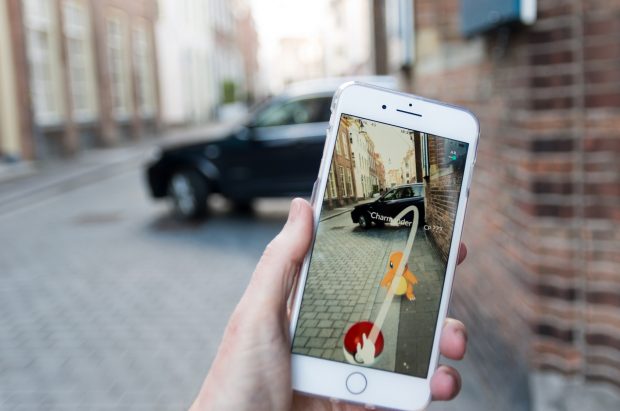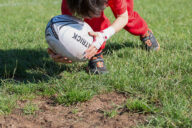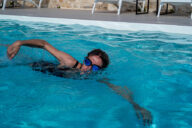One of the more recent crazes to hit the streets in the gaming world has been Pokémon Go. In the first week alone of its release, it soon became one of the most downloaded apps ever and later it hit another record, the fastest app to reach $500 million in revenue. Computer games are nothing new but Pokémon Go, a type of augmented reality game, is far more than what it first appears to be.
Augmented reality games blend digital content into the real world, blurring the line between the physical world and the game world. Your eyes are scanning from the screen of your phone and then back to your surroundings. Your feet are walking, your body is moving, but your focus is elsewhere. Your mission is to find and catch small creatures that enter your ‘real world’ via your screen.
The main objective of the game is to walk to an identified physical place in your area and collect objects (Pokémon) with your smart phone by catching, throwing, trading and battling.
As someone who works with the body and movement, I was curious to learn more about this game. Not out of any interest in playing, but because of the potential risks involved in combining a game that asks players to focus on something on a mobile device, while at the same time walking and moving about. This is a whole new level of distraction that is now being actively encouraged.
The first time I saw Pokémon in use was while observing a young boy in my local town aimlessly walking along, moving his phone around in mid air, completely disconnected from his surroundings. What got my attention was that this type of behaviour appeared to go unnoticed by others. Whether it’s a child playing a game as they walk along or an adult texting or reading an email on the move, it has become commonplace for these kinds of distractions to be an accepted everyday occurrence. So much so that we don’t even question it, or consider how unfocussed and scattered this leaves us, not to mention the after effects of being so distracted and disconnected from our body.
Pokémon Go’s objective is for players to be constantly on the move as they play. Immediately, a player is distracted and is operating on auto-pilot. This is not only dangerous and can, and has, caused serious accidents since the game’s release, but add to that factor the physical movement required, and this game soon becomes something else entirely.
Physical movement is a science in itself and one that is rarely considered in its everyday context, or in relation to games such as this. Serge Benhayon, a complementary health and healing practitioner, presents an understanding and awareness of the body from an energetic perspective. In 1999 Serge Benhayon founded Esoteric Yoga, a form of Yoga that introduces the fact of energy and how each and every movement is a magnification of the energy or quality that we are in. This awareness of energy can change our relationship with our body and build a greater understanding of the effect energy and movement actually has on our state of health and well being.
Each time we move, whether that is bending, twisting, turning, walking and so on, we magnify and distribute energy throughout our entire body. Every step we take sends back the energy we sent down to our feet. And so it goes, up and down and around and around (Benhayon, 2011). Every movement is therefore a movement of energy and this travels in and through our body and, as such, our body receives the impact of the quality of each and every move.
If we walk or move our body in a harsh, hard or abrupt way, this is the quality of energy that travels through every part of our body, meeting every organ and body system, right down to the cellular level. Equally, if we move with presence and in a way that holds an awareness and care for our body, this is the energy that is received and distributed throughout our whole body.
Then, consider for a moment, what is actually taking place if we walk around unfocussed and distracted by a game, or anything for that matter, unaware of the fact that we are even moving, let alone the quality of that movement. What state does this actually leave someone in? Checked out, distracted, scattered, unfocussed… all of which are far from our natural state of being, which is to be present, aware and focussed with an inner stillness and harmony.
With this basic understanding of the science of movement, any game that incorporates a level of distraction combined with physical movement is not as innocent as it may first appear.
And yet there is more…
The nature of this augmented reality game means that, as you play, you provide uninterrupted use of your location and camera. This means that there is also another objective to this game – each player is effectively a gateway to an unlimited source of data gathering.
Further research on this topic of data gathering uncovers a patent, held by the company behind Pokémon Go, directly linking the game’s objective to data collection. The patent “System and Method for Transporting Virtual Objects in a Parallel Reality Game” discusses at length how a game such as Pokémon Go could be used to collect real-world data from a player without them knowing it (Hank et al., 2015). The patent also references an academic paper that states, “In our opinion, the real challenge lies in motivating the user to provide the data constantly, even after the exciting appeal of technological innovation at the beginning wears off. We are convinced that entertainment and fun are an important design aspect of such data collecting services.” (Matyas, 2007)
It is always worth looking behind a product or service to see what the real intention is and what we as consumers are buying into. When the aim of the game is distraction, combined with physical movement, along with a hidden intention to collect data, we all need to ask ourselves what are we actually investing in and what are we giving our children or are part of ourselves? Is it just a game, or is there more to this than meets the eye?
By Vicky Geary
References:
- Benhayon, S. (2011). Esoteric Teachings and Revelations: A New Study for Mankind. Australia: UniMed Publishing.
- Hank, J.V., Augin, M.A., Kornmann, D., Milner, M., & Stern, L. (2015). S. Patent No. 8968099. Washington, DC: U.S. Patent and Trademark Office. Retrieved from: System and method for transporting virtual objects in a parallel reality game
- Matyas, S. (2007). Playful Geospatial Data Acquisition by Location-based Gaming Communities. IJVR, 6, 1-10.
Further Reading:
Autopilot: The case of the wandering mind
Rediscovering Our Body’s Lovely Flow
Connection to self through conscious presence





